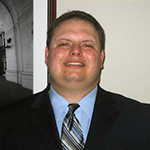
 Around the globe, COVID-19 shown a light on the systemic health and social inequities that put underserved populations at increased risk of getting sick and dying. Care delivery organizations responsible for providing care to underserved communities, are leveraging innovative, technology-driven approaches to delivering care to ensure that all patients, regardless of their ability to pay, receive the same quality of healthcare delivery no matter what entry point the patient takes to care. In order for health equity to be achieved, we must leverage the power of information and technology to improve the quality of care being delivered to underserved communities.
Around the globe, COVID-19 shown a light on the systemic health and social inequities that put underserved populations at increased risk of getting sick and dying. Care delivery organizations responsible for providing care to underserved communities, are leveraging innovative, technology-driven approaches to delivering care to ensure that all patients, regardless of their ability to pay, receive the same quality of healthcare delivery no matter what entry point the patient takes to care. In order for health equity to be achieved, we must leverage the power of information and technology to improve the quality of care being delivered to underserved communities.
Federally Qualified Community Health Centers (FQHCs) in the United States stand on the front line. FQHCs are safety net healthcare providers, funded in part by the Health Resources and Services Administration, of comprehensive primary care and preventive care, including health, oral and mental health/substance abuse services to persons of all ages, regardless of their ability to pay. With COVID-19 keeping patients, especially those with chronic diseases, out of face-to-face encounters, FQHCs and other health entities caring for underserved patients had to thoughtfully apply information and technology driven interventions to ensure gaps in care didn’t happen.
While the pandemic was novel, the challenges the pandemic created were not new to FQHCs. Several FQHCs have been recognized as Davies Award of Excellence winners for their use of innovative and thoughtful, evidence-driven applications of information and technology so that others can learn, adapt and improve the health of their populations.
From El Rio Community Health Center using analytics to identify the top needed areas for the placement of retinal eye cameras for diabetic retinopathy testing, to Petaluma Health Center building innovative data visualization platforms to drive improved care and outcomes for hypertension patients, FQHCs strive to leverage what resources they have to deliver the Triple Aim to all their patients.
The lessons learned from these FQHCs are remarkably similar. The adoption and use of information and technology to improve patient care is driven by the same fundamental principles:
- Each organization is committed to a collaborative, holistic and evidence-driven approach to designing and implementing information technology.
- Each organization embraces a culture of innovation and learning. All use Plan Do Study Act, or PDSA, cycles using clinical quality data to drive technology and workflow innovations, supported by governance structures which can operationalize that learning across the organization.
- Each organization identifies a defined standard of care for each chronic condition or other ailment, collects data to measure adherence to that standard of care, and uses the data as a single source of truth for assessing professional performance by clinicians.
- Government and private payer incentives must reimburse in a manner that drives access, adherence to the standard of care and improved patient outcomes.
Applying These Principles in a Community Health Center
Perhaps no FQHC embraces these fundamentals more than Unity Health Care. Based in Washington, D.C., Unity Health Care’s 27 delivery sites, including correctional facilities, provides care to over 100,000 underserved patients annually. Unity’s application of information and technology has driven significant improvement in outcomes for hypertension management, clinical intervention for depression, and tobacco cessation.
The COVID-19 pandemic forced Unity to apply their lessons learned to ensure that their patient community continued to receive safe and high-quality access to care, while protecting patients and staff from unnecessary risk of exposure. Unity faced the added challenges of reduced staffing and dropping revenue from lower patient encounters. Expanding telehealth services was a logical solution, however a series of pilots using the FQHC reimbursement model proved to not be financially viable. Upon the onset of COVID-19, a change in the District of Columbia Medicaid policy to reimburse telehealth encounters at the same level as face-to-face encounters, opened the window for Unity to drive patients to enhanced telehealth services.
Following the principles detailed above, Unity Healthcare rolled out a comprehensive telehealth program for their patients in a matter of weeks, while maintaining testing sites and staffing temporary care centers for Washington D.C.’s homeless population. With Unity’s over 250 providers unable to engage in a normal face to face collaborative governance structure, the Unity Health IT team created a collaborative work portal to share details on the new telehealth platform and collaborate on best practices for conducting a telehealth visit. In addition, IT technical support was directly available for telehealth encounters as providers got up to speed with the new system. Unity’s mature change management framework and culture of innovation allowed key subject matter experts to participate as they always had, only now through a virtual environment.
Patient communication was also vital, especially for patients who had already scheduled appropriate chronic disease follow up visits well in advance. Using scheduling EHR functionality to develop contact lists, Unity launched a scheduling triage group, responsible for directing patients to the new telehealth service instead of putting themselves at risk with a face-to-face visit.
Within a thirty day period, Unity Health went from conducting zero telehealth visits to over 800 visits daily. Without access to Unity’s telehealth services, their patient population would either be forced to seek other outlets for receiving care, like already overwhelmed hospital emergency rooms, or fail to receive care and risk significant deterioration from chronic diseases like diabetes, high blood pressure and heart disease.
With their telehealth platform now being robustly used, Unity is continuing their commitment to innovation by identifying opportunities to optimize the patient experience using telehealth services. From identifying alternative communication and outreach methods to improving templated documentation and decision support tools to support telemedicine visits, Unity continues to stand as a leader in improving care for underserved communities.
Advancing Care for Underserved Communities with Risk Stratification and Other Tools
As care delivery for underserved populations continues to rapidly evolve, leaders like Unity Health, Petaluma Health Center, El Rio Health Center, and Open Door will continue to stand at the forefront of innovation. One area with a wealth of potential is the use of more sophisticated risk stratification tools for clinical decision support for chronic disease management. Less sophisticated risk stratification tools using just claims and clinical data are starting to be widely adopted. These tools determine if a patient who is higher risk may need different levels of care than an average chronic disease treatment plan.
New risk stratification models are emerging which utilize more robust data sources, ranging from a variety of external registries, social determinants questionnaires conducted during or prior to patient encounters, and behavioral health data, to deliver more nuanced risk stratification. For example, if a patient has a diagnosis of congestive heart failure and has been diagnosed with depression, the patient is at higher risk for deterioration and is more likely to have an expensive and avoidable hospitalization. That patient may require more frequent follow up encounters to ensure that the patient is adhering to the care plan than the standard of care associated with the clinical problem may recommend.
Community health centers and their patient populations would stand to greatly benefit from these sophisticated models being made scalable to their care setting. Often dealing with a population at much higher risk for chronic disease as result of social determinant issues like nutrition and housing, community health centers can more effectively tailor clinical care to drive better outcomes for their patients through more nuanced care plans.
Community Care Outcomes Maturity Model
Use the Community Care Outcomes Maturity Model (C-COMM) to identify unique patient populations and eliminate barriers to care.
Last updated June 16, 2023.



